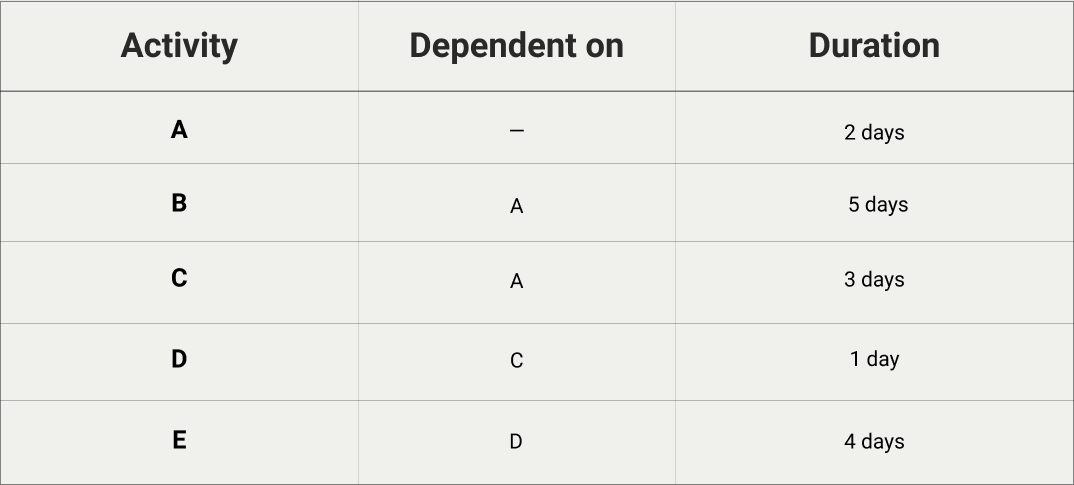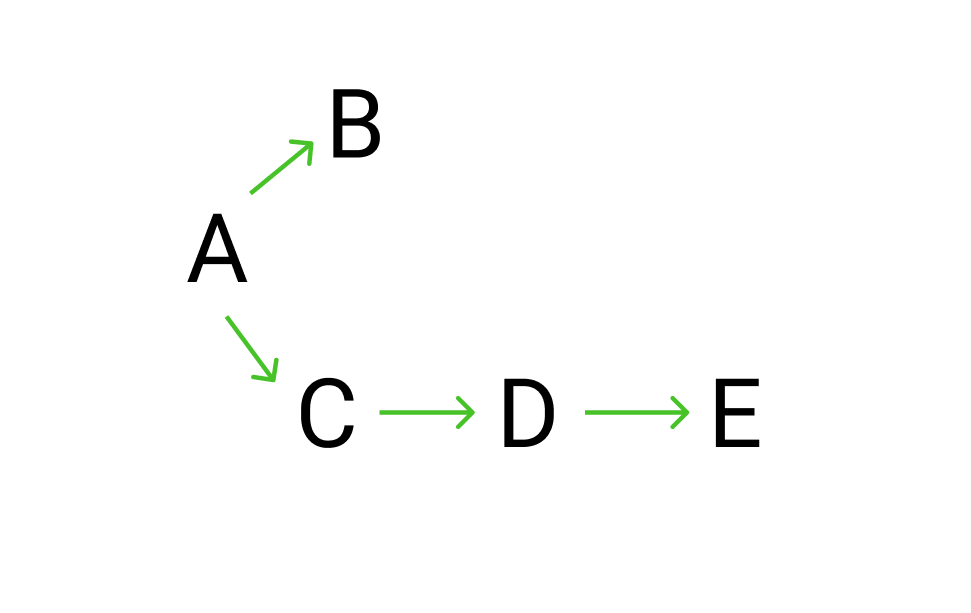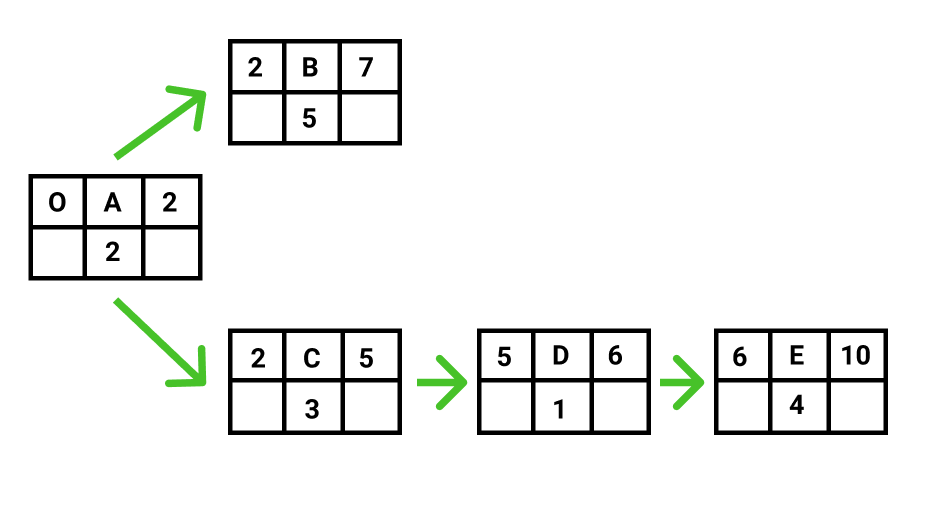What Is a Forward Pass in Project Management?
What Is a Forward Pass in Project Management?
A forward pass in project management is a technique used to move through a project network diagram. The forward pass helps you understand the project duration and calculate the early start and early finish values (meaning, the earliest day each project task can begin and wrap up).
The easiest way to understand a project management forward pass is with an example.
Imagine that you’re tackling a project that has five different tasks or activities (A, B, C, D, and E). You’ve already figured out what each activity is dependent on (otherwise known as that task’s predecessors) and how long each one should take. Here’s what that looks like:

With that basic information in hand, sketch out a rough diagram for your project activities like this:

That’s your very rough network diagram, and now you’re ready to get a little more technical with the boxes that are typically used for project calculations. Each box contains six quadrants that represent the following:
- Activity: The specific project activity (A, B, C, D, or E)
- Duration: How long that specific project activity takes
- Early start: The earliest day of the project timeline you can start that activity
- Early finish: The earliest day of the project timeline you can finish that activity
- Late start: The latest day of the project timeline you can start that activity
- Late finish: The latest day of the project timeline you can finish that activity
Each section occupies a designated space in your boxes, like this:

You’ll use one of those grids for each one of your project activities. Plot those out using the rough diagram you initially created, inserting the activity and the task duration into the center boxes for each:

This means the earliest our project can be completed is 10 days after the project start date. That’s what the forward pass identified for you.
What about the empty squares? Well, there’s a forward pass and backward pass. The backward pass moves backwards through the system (as the name implies) to fill in those squares and figure out your late start and late finish dates.
Both the forward pass and backward pass in project management are useful for identifying your critical path, meaning the longest string of dependent activities. If you experience a setback on your critical path, the whole project will be delayed.

Artem Gurnov
Artem is a Director of Account Development at Wrike. He previously held the role of Project Manager, overseeing a team of customer success managers (CSMs). Over the years of building teams and scaling business processes, he has successfully deployed multiple projects, from automating client outreach to setting up work prioritization tools for sales reps and CSMs.

